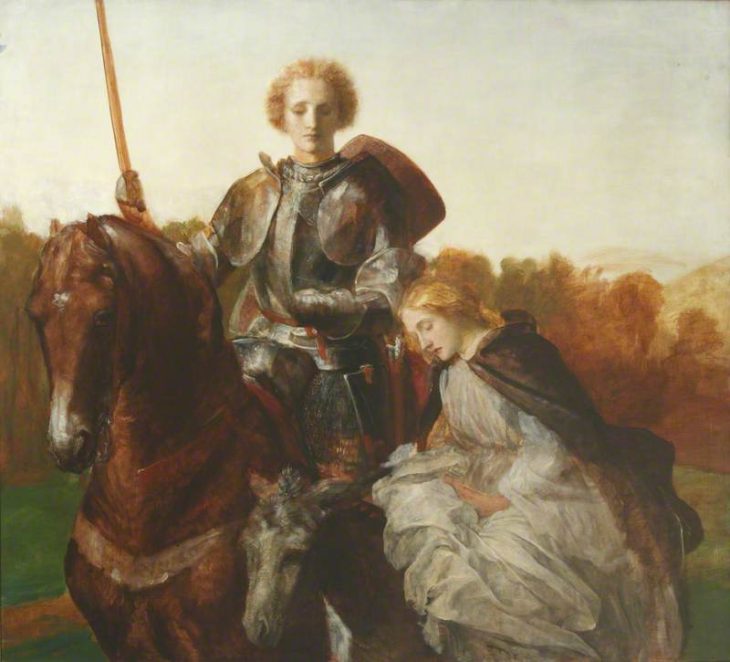
Word of the Day: Braggadocio
Today’s word of the day, thanks to Merriam-Webster, is braggadocio. Braggadocio “refers to brash and self-confident boasting—that is, the annoying or exaggerated talk of someone who is trying to sound very proud or brave” (https://www.merriam-webster.com/word-of-the-day). More precisely, it means “empty boasting” or “a boasting person” (https://www.dictionary.com/browse/braggadocio), so either the act or the person who performs the act.
M-W explains, “The English poet Edmund Spenser originally created Braggadocio as a personification of boasting in his epic poem The Faerie Queene. As early as 1594, about four years after the poem was published, English speakers began using the name as a general term for any blustering blowhard. The now more common use of braggadocio, referring to the talk or behavior of such windy cockalorums, developed in the early 18th century” (https://www.merriam-webster.com/word-of-the-day).
Etymonline concurs: “1590, coined by Spenser as the name of his personification of vainglory (Faerie Queene, ii.3), from brag, with augmentative ending from Italian words then in vogue in English. In general use by 1594 for ‘an empty swaggerer;’ of the talk of such persons, from 1734” (https://www.etymonline.com/word/braggadocio#etymonline_v_27349). Brag first appears in English in the “late 14c., braggen ‘to make a loud sound,’ also ‘to talk boastfully,’ of obscure origin, perhaps related to bray of a trumpet and imitative, or related to the Middle English adjective brag ‘ostentatious, proud; spirited, brave’ (early 14c.), which probably is from Celtic, and is the source of the surname Bragg (attested from mid-13c.). Perhaps a merger of the two. Other sources suggest Old Norse bragr ‘the best, the toast (of anything),’ also ‘poetry.’ Also see braggart for another possibility, but French brague seems too late to be the source” (ibid.).
Edmund Spenser (c. 1552-1599) was an English Renaissance poet. He was born in London, probably the son of a clothmaker, attended the Merchant Taylors’ School, and then attended Pembroke College at Cambridge University as a sizar, a student who gets financial help (https://en.wikipedia.org/wiki/Edmund_Spenser). He worked as a personal secretary to several well-heeled individuals while he wrote poetry. His first major poem was The Shepheardes Calendar (1579), a series of eclogues or pastoral dialogues in imitation of Virgil.
In 1580, he went to Ireland with Arthur Grey and Walter Raleigh. He participated in the Siege of Smerwick massacre. When Grey returned to England, Spenser stayed behind and served in various government posts while collecting land. In 1590, he published the first three books of The Faerie Queene, his most famous work. He republished them with the second three books in 1596. During those years, his first wife died and he remarried, celebrating the courtship of his second wife in a sonnet sequence called Amoretti and their marriage with his Epithalamion (ibid.).
The Faerie Queene was presented to Queen Elizabeth, probably with the help of Raleigh. It was, in part, an effort to gain Elizabeth’s favor, and in that regard it succeeded since she granted Spenser a pension for life.
The poem is allegorical as well as epic. Each of the six books focuses on a single virtue: Holiness, Temperance, Chastity, Friendship, Justice, and Courtesy. The first book is the most read. It concerns the travels and travails of the Redcrosse Knight and his lady Una. Redcrosse Knight represents holiness, and Una represents the one true faith. They are assaulted throughout the book by the machinations of Archimage and the lusty treachery of Duessa, Una’s opposite.
Like in the stories of King Arthur, where Arthur sends his knights out on quests, Faerie Queene also has a ruler who sneds her knights out. In this case, the ruler is Gloriana, who clearly represents Queen Elizabeth.
Braggadocio appears in Book 2, which concerns Guyon, the knight of Temperance. Braggadocio is a horse thief who bullies another character. He carries a spear but not a sword even though he claims that he is the greatest knight around. He says that he won’t carry a sword until he can carry the best sword in the world. That sword is, of course, Excalibur, but Braggadocio will never get that sword. But Braggadocio turns out to be a coward, and his character is made plain to everyone.
The Faerie Queene is about virtue and heroism. A more recent fictional character who is about virtue and heroism is one from Robert B. Parker’s hard-boiled detective series in which the private detective is named Spenser. Just Spenser. No first name. Like Paladin in Have Gun, Will Travel.
Today’s image is of a painting of Redcrosse Knight and Una, in Spenser’s Faerie Queene, by George Frederic Watts (1817-1904). The painting is housed at St. Hilda’s College, Oxford University (https://artuk.org/discover/artworks/una-and-the-red-cross-knight-223292).